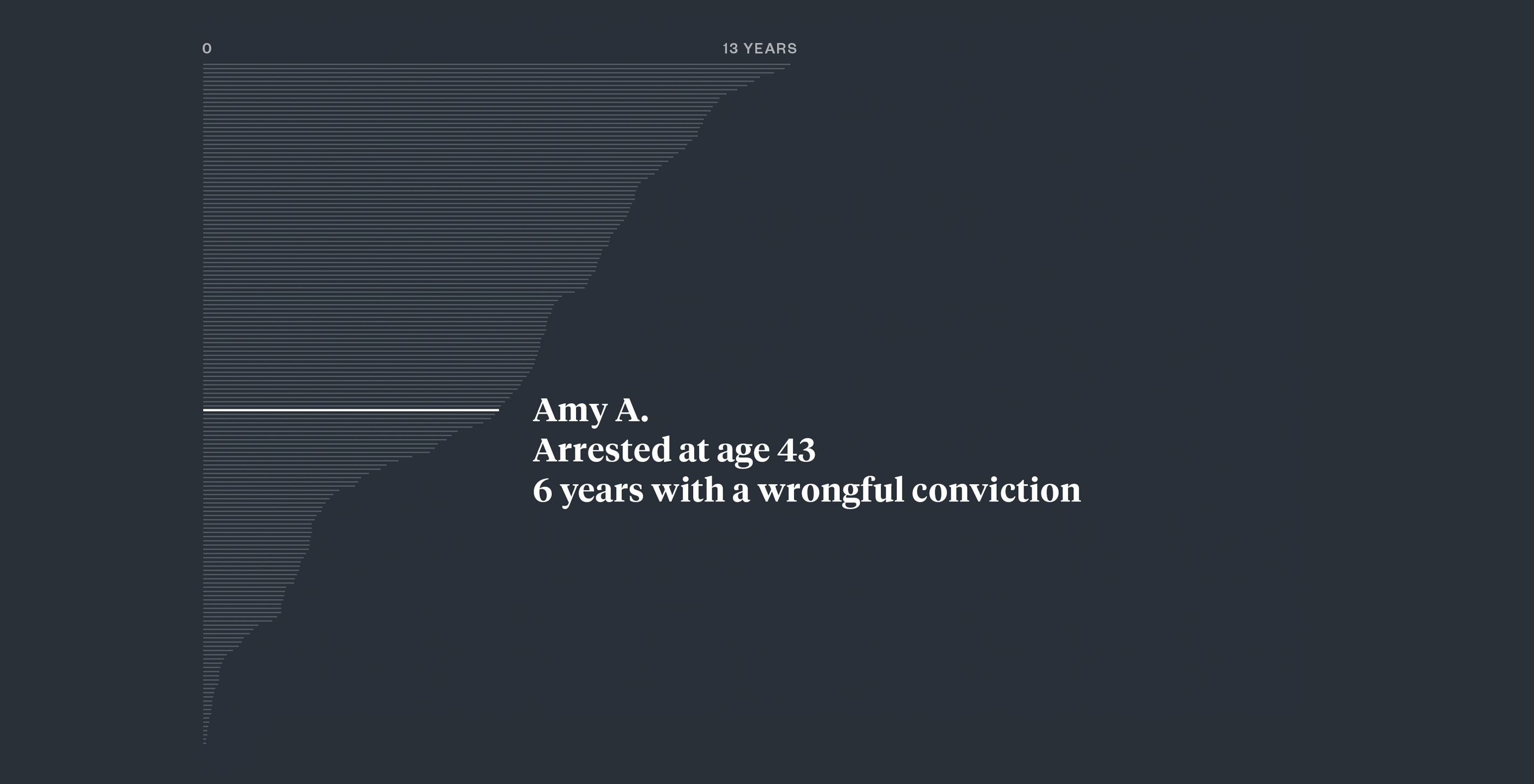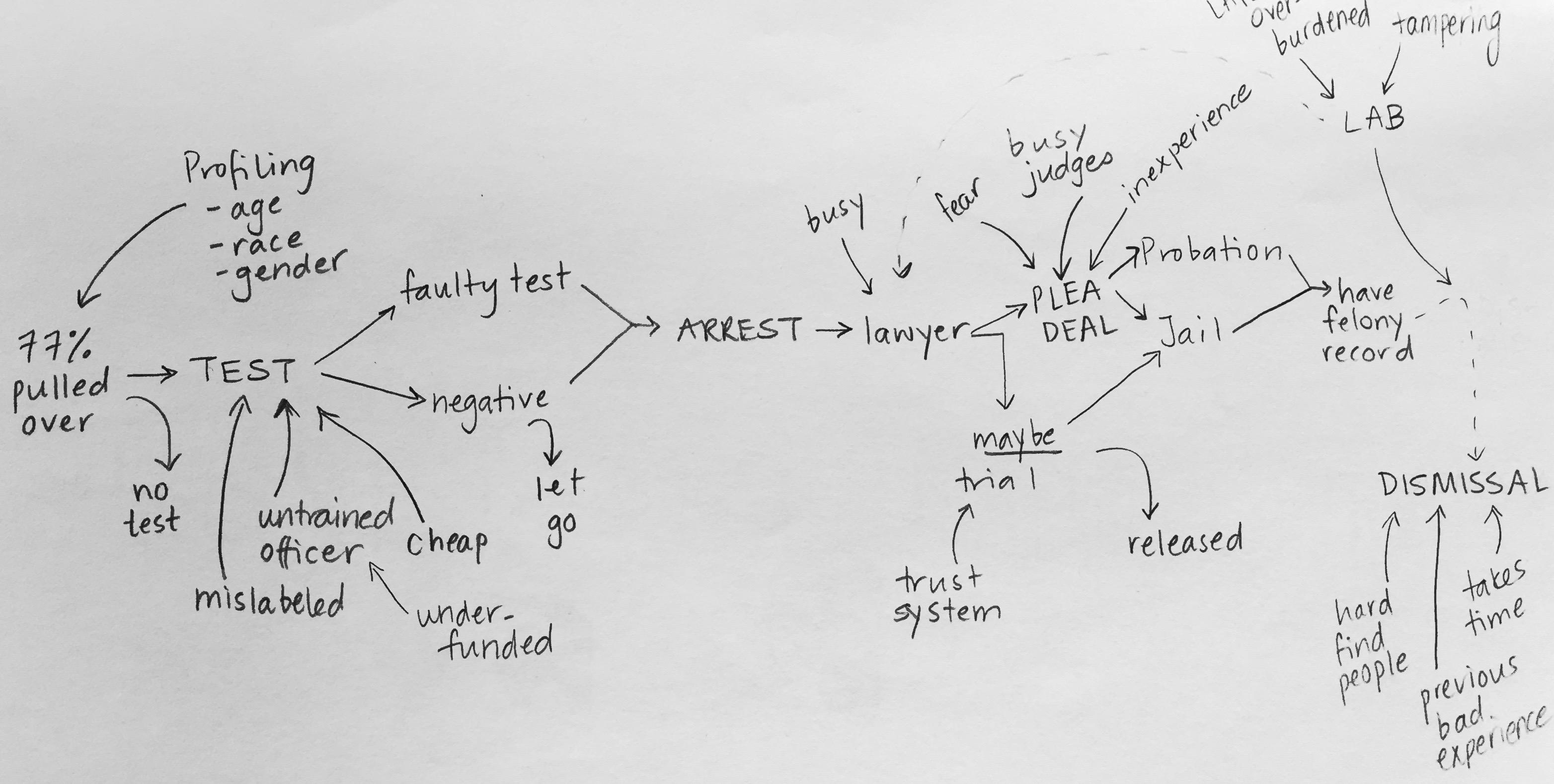

We dove into a dataset containing hundreds of wrongful convictions in Houston over the last decade. We were fascinated by the temporal aspect of the judicial process, so we designed a series of graphics to break down the timeline. We also created graphics that explored the demographic population of the accused.
To clarify the sequence of events for the article, we compiled the information into a timeline of what should happen, punctuated at each step by system failures that did happen. The first point of failure is the chemical field test. The test results are unreliable and are not supposed to be used as evidence in court. Despite the scientific and legal skepticism, police departments nationwide use the tests to arrest and convict individuals.
The field test is one system failure that precedes many others: overworked lawyers and judges, premature plea deals, delayed crime labs, and poor communication between departments. Uninformed about the consequences of a felony conviction, innocent people regularly plead guilty in exchange for a shorter sentence and a criminal conviction.

While grappling with the reality that hundreds of people in Houston alone still live with wrongful convictions, our visualizations feature elements of the data that we found most striking.
+Frequency: Over 300 people were wrongfully convicted in Houston from 2003 to 2015.
+Inaccuracy: 3 in 4 individuals had no drug whatsoever.
+Bias: Young adults, black people, and men are disproportionately convicted.
+Inexperience: Over half of the innocent people pleaded guilty within a week.
+Permanence: 75 percent of innocent people still have a felony conviction.
+Time: The average time that people live with the conviction is 7 years.
As mentioned, time was the most poignant variable from our perspective. The convicted individuals, especially those arrested at a young age, had formative years of their lives stifled by wrongful convictions. With a felony conviction, individuals face restricted government benefits, employment opportunities, housing, and voting rights. For example, Gonzalo S. was arrested in 2004 at age 17, and has now been living with a felony conviction for 40 percent of his life.
While most of the wrongfully convicted were arrested, accepted a plea deal, and received a sentence before the lab results came back, there were a few cases that deviated from the trend (and to note, this trend is not how the criminal justice system is supposed to work). Twenty people pleaded after their clean labs came back. Some of these cases could be data errors, but they most likely represent cases when no one checked for clean lab results prior to the conviction.
The data also shows how common it is for lab results to come back after the sentencing, but the individual’s record doesn’t get cleared until years (or a decade) later. Sometimes the lab test occurred during incarceration, but no one checked the results. In other cases, results came back after the individual's release, but the person was hard to locate or afraid to return to the court to have their case dismissed.
The story and the data demonstrate a series of failure points in the criminal justice system. Read the full story and learn about the detectives, lawyers, and reporters who are working to overturn the wrongful convictions.
We’d love to hear what you’re working on, what you’re curious about, and what messy data problems we can help you solve. Drop us a line at hello@fathom.info, or you can subscribe to our newsletter for updates.